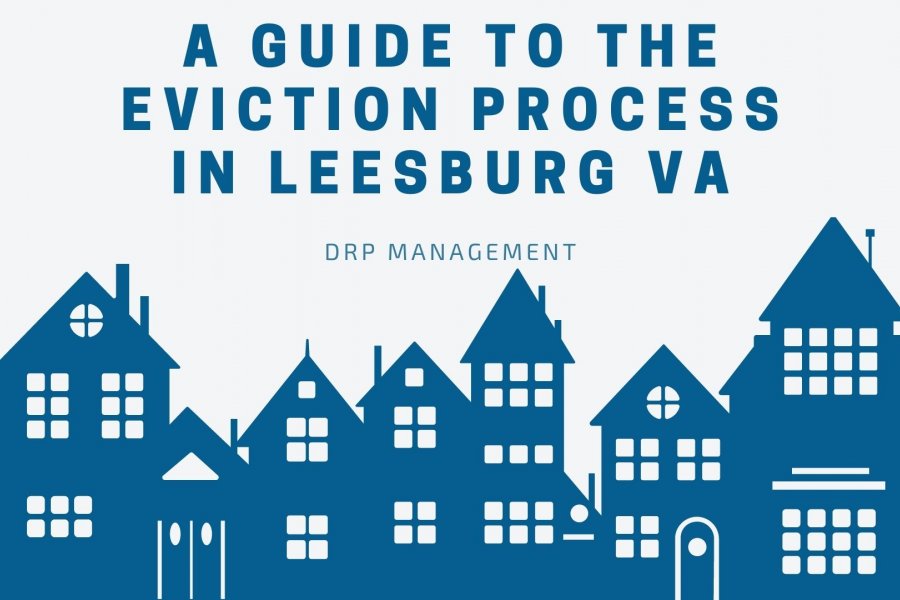
Landlords have a right to evict their Virginia tenant for a variety of reasons, including when the tenant fails to pay rent and stop abiding by the terms of the lease or rental agreement.
As a Virginia residential landlord, evicting a tenant, however, isn’t as simple as just locking the tenant out of the rental unit or packing up their belongings. That is not only illegal, but a tenant may also file a lawsuit against their landlord for damage.
The only way to evict a tenant in Virginia is by filing an eviction lawsuit and receiving a court order. And even then, it’s only a sheriff or a constable that can physically evict the tenant from the rental of a landlord. To prevent legal issues, it's critical to follow the eviction process in Virginia outlined in the Virginia Landlord Tenant Law.
The following is a step-by-step guide to the proper eviction procedures in Virginia.
Step #1: Post an Eviction Notice
Posting a notice is the first step in the eviction process in Virginia that a landlord will need to take to terminate a written lease agreement. For the landlord to serve the tenant with an eviction notice, they’ll need to have a just cause. Basically, a just cause is a form of tenant protection designed to prevent landlords from serving a notice or evicting their tenant in an arbitrary, discriminatory, or retaliatory manner.
Under landlord-tenant law in Virginia, just causes to serve a notice include in reaction to the tenant refusing to pay rent, lease violations, and illegal activity. And with a just cause, a landlord can move on to the next step of the eviction process – serving the tenant with a written notice for eviction.
Here are the just causes and their required eviction notice in a bit more detail:
Nonpayment of Rent
Is your tenant late on paying rent? If so, Virginia law allows a landlord to commence eviction proceedings against them by serving them a notice. the Landlord must serve the tenant a 5 day notice to pay the unpaid rent.

The written notice will give them five days to pay the past the rent due date to avoid being evicted. If the tenant fails to pay their rent and remain on their rental property after this period, a landlord may continue with their eviction.
Lease Violation
When a Virginia tenant signs a lease agreement, they agree to abide by the terms of the written rental agreement, including:
- Caring for the unit
- Abiding by the occupancy limit
- Abiding by the pet policy, if any
- Not smoking in the unit, if there is a smoking policy
- Complying with the health and safety codes
Per the Virginia process, a landlord will have two options when it comes to lease agreement violations. For correctable or curable violations, the landlord will need to serve your tenant with a 30-Day Notice to Comply. Examples of a curable violation include having an unauthorized pet and exceeding the rental limit. Deductions from the security deposit can also be implemented if the unit was neglected.
The 30-Day Notice to Comply will give the tenant 21 days to correct the issue or else the lease will end in 30 days.
For incurable violations, the landlord must give the tenant a 30-Day Notice to Quit. Incurable violations include repeat violations, and material health and safety violations.
If the tenant's violation is not corrected within the notice period, the landlord may proceed with the eviction process.
End of the Lease
Virginia landlords also have a right to evict tenants who “holdover” after the rental period ends. Holdover tenants are those that continue staying at their rented premises after their rental agreement has expired.
The notice amount depends on the frequency of rent payments. For tenants who rent on a weekly basis, the landlord must serve them a 7-Day Notice to Quit to commence the eviction action against them. And for tenants who pay rent on a monthly basis, the property managers must serve them a 30-Day Notice to Quit.

Again, if the tenant doesn’t move out after the tenant's final notice ends, a landlord can continue with the process of eviction.
Illegal Activity
Illegal activity is a criminal or willful act, and a serious form of lease violation. In fact, Virginia's eviction laws require that landlords don’t give tenants involved in illegal activity any prior written notice to vacate the rental unit for illegal lease violations. The following are examples of illegal activities:
- Criminal drug activity
- Illegal drug activity
- Violent acts affecting other residents’ health or safety
If a tenant does any of the aforementioned acts, you can move directly to the next step in your Virginia eviction.
Step #2: File a Complaint
If a tenant won’t correct the violation (for example, pay the due rent or move out within the notice period), then landlords can move to court and file an eviction or a complaint.
The appropriate court to file a complaint in is the circuit or District Court in the county where the landlords property is located. Landlords need to pay a filing fee to the circuit or general district court to file a complaint.
Once you have paid the filing fee, the court’s clerk will issue you a copy of the summons and complaint. These will need to be served to the tenant. The service must be done by a process server, a sheriff, or anyone aged at least 18 years and isn’t part of the case.
The tenant must be served the summons and complaint in any of the following ways:
- In-person
- By mail and posting a copy at the rental unit
- By leaving a copy with a family member aged at least 16 years
Step #3: Attend the Eviction Hearing
Typically, eviction hearings occur anywhere between 21 and 30 days after the summons and complaint are filed in court. However, the court hearing can take longer if you choose to have a jury trial when you evict a tenant.

If the tenant chooses not to appear for the eviction lawsuit, the court will most likely issue a default judgment. After the judge rules for eviction for a tenant, the court will you a writ of eviction, giving the sheriff powers to forcefully remove the tenant.
Step #4: Request a Writ of Eviction
The writ of eviction can be issued as soon as 10 days after a successful judgment. The tenant will have no option but to leave within the notice period, typically between 15 and 30 days. If they don’t, a sheriff will forcefully remove them and the property’s possession will be returned back to you.
Please note that you have 180 days to request the writ of eviction after a successful judgment. If you don’t, you’ll have to start the process all over again.
Bottom Line
Evictions are the last things any landlord wants, but sometimes they are inevitable. To make this risk as minimal as it can be, consider hiring a reputable company like DRP Management! We select only the best tenants for your rental property and can handle the rare eviction case in accordance with the landlord tenant act on your behalf. Contact us today to learn more about our services.
Disclaimer: This blog isn’t a substitute for professional legal advice. Also, laws change and this information may not be up to date at the time of your reading. If you have a specific question or need help in any aspect of property management, kindly get in touch with our team.
